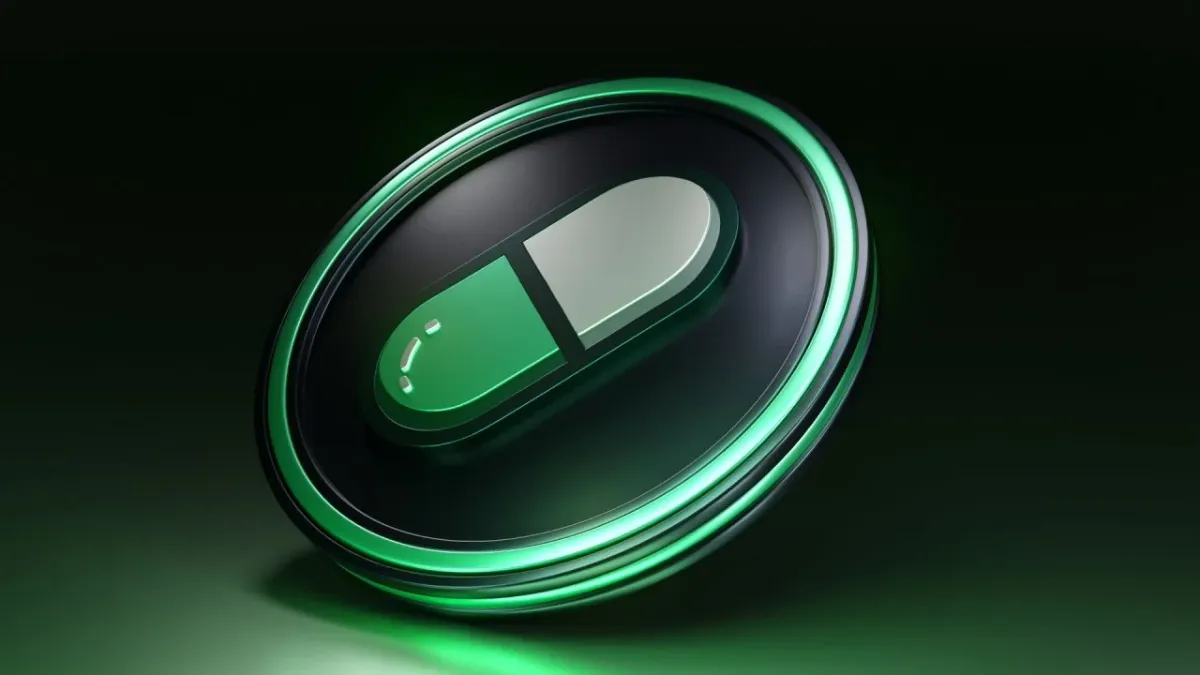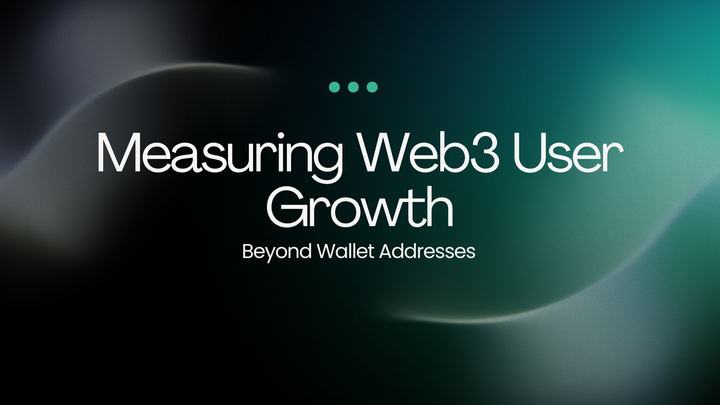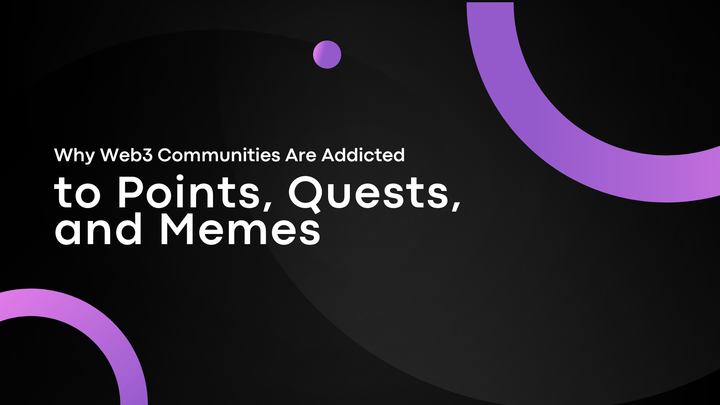Pump.fun: From Meme Token Craze to a $1B Token Launch Rumor

What is Pump.fun? A Solana Meme Token Launchpad
Pump.fun is a meme token launch platform built on the Solana blockchain. It allows anyone – even those with no coding experience – to create a new token (often meme-themed) within minutes. All token launches on Pump.fun are “fair-launch”, meaning there are no insider pre-sales; everyone has equal access to buy when a new coin is created. This simple, no-code interface and low cost (about 0.02 SOL, roughly a few dollars) lowered the barrier to launching tokens, turning the process into a quick, inexpensive, and non-technical task. In essence, Pump.fun became a one-click meme coin factory during the 2024–2025 crypto frenzy.
Why was this significant? Prior to platforms like Pump.fun, creating a cryptocurrency required writing smart contracts or technical know-how. Pump.fun streamlined this by handling the token deployment and initial trading setup automatically. It even uses a bonding curve mechanism so that once you launch a token, it can be immediately traded without the creator having to provide liquidity. This innovation made Pump.fun extremely popular among crypto enthusiasts looking to capitalize on meme coin trends.
Explosive Growth: Millions of Tokens and Users
Thanks to its ease of use and Solana’s low fees, Pump.fun saw explosive growth during the meme coin boom. The platform became the go-to meme coin launchpad on Solana shortly after its debut in early January 2024. By leveraging viral internet culture and FOMO, Pump.fun attracted a massive user base and drove incredible activity on Solana:
- Millions of tokens launched: Over 8.7 million tokens were created via Pump.fun in just its first 15 months. (By mid-2025, that figure reportedly exceeded 11 million tokens, an unprecedented scale.)
- High user engagement: At its peak, more than 300,000 wallets were active daily on Pump.fun, as users launched or traded countless meme coins. The platform accounted for roughly 60% of all new tokens created on Solana by late 2024 – highlighting how dominant it became in Solana’s token ecosystem.
- Massive trading volumes: Popular tokens could skyrocket in value within days. For example, one meme coin called DogWifHat (WIF) improbably surged to over a billion dollars in market cap, showing how far the speculation went. Community-driven coins often went viral, generating huge trading volumes and fees on the platform.
All this activity translated into huge revenue for Pump.fun. The platform charges small fees on token launches and trades, which added up fast. By early 2025, Pump.fun had earned around $700 million in cumulative fees – an astonishing sum for a newly launched dApp. In fact, at one point in January 2025, Pump.fun was pulling in over $3 million in fees per day during peak meme coin mania. This put Pump.fun among the top crypto applications globally in terms of daily revenue.
In summary: Pump.fun’s user-friendly meme coin creation model enabled virtually anyone to mint a token and try their luck. This fueled a Cambrian explosion of meme tokens and attracted millions of users (measured by wallet activity) to Solana. However, such frenzied growth based on speculation proved hard to sustain – and eventually the hype began to cool.
The 2025 Slowdown: Declining Activity and Revenue
By early 2025, cracks were appearing in Pump.fun’s meteoric growth. The memecoin craze started to fade, and with it the platform’s usage dropped sharply:
- Falling token launches: In January 2025, users were launching 50,000+ new tokens per day on Pump.fun. By March, that rate had fallen to around 25,000 per day, and even dipped as low as 17,000 on some days. This signaled that fewer new participants were jumping in and the frenzy was subsiding.
- Revenue “fell off a cliff”: Pump.fun’s fee revenue plummeted by over 95% in just a couple of months. Daily revenue slid from over $3 million in January to around $120,000 per day by mid-March – levels not seen since the platform’s launch. By May 2025, monthly revenue was down 66% from its January peak (May brought in $46.6M vs. $137M in Jan).
- Market fatigue: Many of the meme coins created during the boom had little to no lasting value – in fact, only 4 out of ~8.7 million tokens launched on Pump.fun ever retained a market cap over $100 million. As traders realized most Pump.fun coins were short-lived “pump-and-dump” gambles, enthusiasm cooled. The broader meme token market cap had dropped by over 50% from December to June.
Pump.fun also faced community backlash and even legal scrutiny as the party wound down. Critics pointed out that the platform enabled countless sketchy tokens and quick rug-pulls. Many regular users lost money chasing meme coins, while Pump.fun’s creators were profiting from the fees. Some in the Solana community accused Pump.fun of “extracting” value – reportedly over $700M – from users without giving enough back. In fact, analysts noted that only a fraction of those revenues (around $150M) remained reinvested in the Solana ecosystem, with the rest presumably cashed out or held by the team. This raised concerns about the team’s incentives and commitment to the community.
In short, by Q2 2025 Pump.fun’s golden age of growth had ended. User activity and revenues had collapsed, and the platform’s reputation had taken a hit. The company needed to respond to revive interest and address criticisms.
Pump.fun’s Response: PumpSwap and Revenue Sharing
To adapt to the slowdown, Pump.fun’s team rolled out new features and changes in 2025 aimed at revitalizing the platform and aligning incentives with users:
- Launching PumpSwap (March 2025): On March 20, Pump.fun introduced PumpSwap, its own built-in decentralized exchange (DEX) for trading the meme coins. Previously, liquidity for newly created tokens was hosted on external Solana DEXs (like Raydium). By launching PumpSwap (an automated market maker under Pump.fun’s control), the platform could keep trading activity in-house and earn the trading fees itself. PumpSwap saw instant adoption – in its first two weeks, it handled over $3.18 billion of trading volume. By April, PumpSwap was averaging $250–$350 million in daily volume, actually surpassing the initial bonding-curve phase in trading activity. Over 134,000 frequent traders were using PumpSwap daily. This move not only generated new fee revenue for Pump.fun, but also gave the platform “complete control over the memecoin lifecycle from creation to liquidity”. Pump.fun even ended its prior partnership with Raydium, signaling confidence in its own exchange.
- Revenue-sharing with token creators (May 2025): To tackle the criticism that developers were launching low-effort coins just to dump them, Pump.fun implemented a creator revenue share model. In May 2025, the team announced that 50% of PumpSwap’s trading fees would be shared with the creators of those tokens. In practice, a token creator now earns 0.05% of all trading volume on their coin (since PumpSwap’s fee is 0.1%). For example, every $10 million in volume on a coin would pay its creator $5,000 in SOL, claimable via Pump.fun’s dashboard. This is a shift in incentive: previously, a meme coin developer’s only profit path was to buy their own coin at launch and later sell (“dump”) it on the community. That model encouraged pump-and-dump behavior. With a share of ongoing trading fees, honest developers can earn recurring revenue if their coin maintains activity, reducing the pressure to cash out immediately. Pump.fun’s founder Alon Cohen framed this as a long-term play to support sustainable projects: “Creators no longer have to solely rely on selling coins to benefit... they continue earning after the initial hype”. This revenue-sharing was applied retroactively to even those tokens that already “graduated” off the bonding curve into PumpSwap’s pools.
- Other initiatives: Pump.fun also introduced a revamped social layer (allowing real-time chat and reactions on token pages) and launched a mobile app in 2025. These features aimed to keep the community engaged and make the platform stickier. The team even teased experimental products like “PumpFi” (an “Ape Now, Pay Later” financing tool for buying tokens or NFTs on installment). All these moves were attempts to innovate beyond the initial meme coin launch frenzy and find new growth avenues.
Together, these responses had some positive impact – Pump.fun’s revenue rankings rebounded somewhat after PumpSwap’s launch. However, the core issue remained that the meme coin market was shrinking. By mid-2025, even as Pump.fun tried to evolve, many were asking: what comes next for Pump.fun? The answer, it seems, may be the platform’s own token.
Rumors of a $PUMP Token Launch (June 2025)
The latest twist in Pump.fun’s story is the buzz about an upcoming Pump.fun native token – tentatively referred to as $PUMP. In early June 2025, reports and rumors exploded across crypto circles that Pump.fun is preparing to launch a token with a massive fundraise. According to a report from Blockworks (citing insider sources), Pump.fun plans to raise $1 billion via a token sale at a $4 billion fully diluted valuation (FDV). In other words, the token sale (between public and private investors) would sell 25% of the total token supply (since $1B is one-quarter of $4B). This would instantly value Pump.fun among the top projects in crypto by market cap, despite the recent decline in usage.
The rumors suggest the token launch could happen very soon (June 2025). One community leak on X (Twitter) claimed the token might launch “within the next two weeks” of the first rumor (which surfaced around June 3). There is speculation that multiple major centralized exchanges are already lined up to list $PUMP upon launch. Notably, the crypto exchange Bybit made a curious ticker change on May 30 (renaming an unrelated asset’s ticker from $PUMP to $PUMPBTC), which observers interpreted as a sign that Bybit is reserving the "$PUMP" symbol for Pump.fun’s token listing.
Pump.fun’s team had previously denied plans for a token. As recently as March 2025, co-founder Alon Cohen told users to ignore token launch rumors and wait for official announcements. Yet, the current silence from the team is fueling belief that this time the token launch is real. No official confirmation or whitepaper has been released as of early June, but insiders claim the team is busy finalizing legal and logistical preparations. The sheer size of the rumored raise – $1B – has also raised eyebrows. If true, it would be one of the largest token sales in crypto history (on par with big Layer-1 blockchain fundraises). It suggests Pump.fun might have very ambitious plans for expansion or new products powered by this token.
Leaked Token Distribution: Who Gets the $PUMP Tokens?
Alongside the fundraising rumors, leaked tokenomics details have been circulating on social media. While unconfirmed, these leaks paint a picture of how the $PUMP token supply (presumably 1 billion tokens) might be allocated:
- 25% – Public/Private Sale: Roughly 250 million $PUMP would be sold to investors in the token generation event (through a combination of private and public sale rounds). This is the portion aimed at raising $1B in capital, given the $4B valuation.
- 10% – Airdrop to Users: An estimated 10% of the tokens (100 million $PUMP) may be set aside for a free airdrop to Pump.fun’s community. Eligible recipients would likely be users who have been active on the platform (e.g. created or traded tokens) before a certain snapshot date. One rumor suggests the airdrop will be split based on activity – for example, 60% of airdrop rewards to token creators and 40% to traders, to reward both sides of the ecosystem (this detail appeared in an unofficial leaked whitepaper).
- 15% – Team & Advisors: Approximately 150 million $PUMP would go to the founding team and key advisors as their allocation. Such tokens, if this leak is accurate, would be locked with a vesting schedule (e.g. a 6-month cliff and 2-year linear vestin) to ensure the team can’t dump them immediately and to align with long-term success.
- 20% – Ecosystem & Partnerships: Around 200 million tokens reserved for growth initiatives – things like future developer grants, partnerships, marketing, or other ecosystem-building efforts. These would likely be utilized via a community-governed foundation or DAO over time.
- 25% – Liquidity & Mining Incentives: Roughly 250 million $PUMP for providing liquidity and rewarding users. This could fund liquidity mining programs on PumpSwap or other DEXes, and possibly staking rewards for $PUMP holders.
- 30% – Treasury/Reserve: The remaining 300 million tokens kept in the project treasury. This chunk could be used for governance (if $PUMP is a governance token) and as a reserve for unforeseen needs or future features. It would presumably be managed by a Pump.fun DAO if one is established.
(Note: The percentages above are speculative, pieced together from leaks – the official numbers could differ. Also, eagle-eyed readers will note those allocations sum to more than 100%. In one leaked draft, the “sale” portion wasn’t explicitly listed, suggesting some categories might overlap or the initial sale comes out of the treasury or incentives. Until confirmed by Pump.fun, these figures remain rumor.)
Implications of the distribution: If these tokenomics hold true, what would it mean for the community and the platform? On the positive side, a 10% airdrop means loyal Pump.fun users get to share in the project’s success directly. This could amount to a $400 million windfall distributed to the community (given a $4B total value). Such an airdrop might be one of the largest ever in Solana’s history, potentially rewarding those who stuck with the platform during its rise. It could also bring a surge of activity – users might rush back to Pump.fun hoping to qualify for or maximize their airdrop allocation.
However, the distribution also shows that the team and investors retain a large majority of tokens (~75% combined). A 25% sale for $1B implies significant ownership by those investors; meanwhile the team’s 15% (if true) would be worth $600M on paper at FDV. Some community members view this as the team “cashing in” on the hype they created, especially since Pump.fun has already earned so much from fees. The large treasury and ecosystem allocations are ostensibly meant to grow the platform’s future, but skeptics worry that unless $PUMP has strong utility, these tokens could just overhang the market (or be slowly sold to raise even more money). Token utility has not been explained yet by the team – possibilities floated include using $PUMP for governance voting, for staking to earn a share of platform fees, or for boosting one’s meme coin launch in the bonding curve (for example, a mechanic to “boost coins past the graduation threshold”). Without clear utility, there is a risk $PUMP could be seen as merely a governance token or, worse, an “exit liquidity” vehicle for the company and investors.
Another consideration is market impact: if 100M tokens are airdropped, many recipients might immediately sell some, creating selling pressure. Likewise, the $1B raise itself could drain liquidity from the Solana ecosystem as investors lock up funds for $PUMP. In fact, when the rumor broke, prices of several Solana-based meme coins (that Pump.fun helped launch) fell noticeably – e.g. BONK dropped 5%, POPCAT 12%, and even SOL token dipped 2% – as traders anticipated capital rotating into the new $PUMP token or an airdrop. Such moves indicate the community is bracing for a big shift once $PUMP launches.
Community Reactions: Excitement vs. Skepticism
The Pump.fun token rumors have elicited mixed reactions across the crypto community. On one hand, there is excitement from users who see this as a natural next step for the platform, but on the other hand, many are highly skeptical or critical. Here’s a breakdown of the sentiment:
- Excitement and Anticipation: A portion of the community is eagerly awaiting the $PUMP token. For enthusiasts, the token launch is seen as an opportunity to be part of Pump.fun’s growth or profit from it. Some traders are optimistic about the token’s listing on exchanges and potential price action. For example, prominent crypto influencer Ansem tweeted that he “can’t wait” for the Pump.fun token, noting the possibility of it being listed on Hyperliquid (a decentralized futures exchange) as a sign of big things to come. Others think the token could revive interest in Solana memecoins in general – an airdrop or new reward system might bring back the fun of late 2024. There’s also a view that Pump.fun having its own token could align the community, turning users into stakeholders. Nick O’Neil, a Solana community figure, called the move “massive” and suggested it will drive liquidity and put Pump.fun back on top of Solana’s DeFi scene.
- Cautious Optimism: Some observers see both pros and cons. For instance, crypto analyst Miles Deutscher remarked that a Pump.fun token could be good for savvy traders who know how to navigate volatile launches (there will be chances to make money), but he warned it might be “net bad” for crypto overall. His reasoning: the majority of users might not manage the risks well (“most people aren’t trenching… they just buy and hold”) and could end up on the losing side, as happened with many Pump.fun-launched coins. This camp is interested in the token but wants to see clear utility and fair mechanics to benefit the community, not just enrich the creators.
- Skepticism and Criticism: A significant number of community members have reacted negatively to the rumored token launch. There is open skepticism about the $4 billion valuation in light of Pump.fun’s declining usage. Developers from the Solana community, like 0xngmi of DefiLlama, publicly questioned why Pump.fun even needs to raise $1B – noting the team is “sitting on nearly $700 million” from past revenues that haven’t been spent on growth yet. The concern here is that the raise is excessive and unjustified: if Pump.fun hasn’t deployed the money it already made to significantly improve the product or ecosystem, how will adding another billion help? It led to speculation that the team might be raising funds simply because they can, not because they have $1B of productive use for it. Some in the community even joke that perhaps Pump.fun wants to build an entirely new Layer-1 blockchain with that money (since such huge raises are usually for new base protocols) – an unlikely scenario, highlighting the puzzlement over the size of the sale.
- “Cash Grab” Allegations and Utility Concerns: The harshest critics see the token launch as a cash grab or “last-ditch attempt to extort money from the ecosystem”. From their perspective, Pump.fun’s founders have already profited handsomely (hundreds of millions in fees), and now that memecoin activity is waning, they want to capitalize one more time by selling a token at a high valuation. These users point out that Pump.fun has not yet articulated any real utility for $PUMP – no clear reason why the token is needed for the platform beyond as a fundraising vehicle. If the token ends up having limited use, it could hurt holders in the long run. Additionally, there’s criticism of the team’s incentives and past behavior: Pump.fun “ruined the crypto space” by turning investors into degenerate gamblers, argues a popular commentator Ash Crypto, who notes the platform “extracted $700 million while a majority lost money” on those tokens. This group feels that unless the token somehow compensates users for those losses or fundamentally changes Pump.fun’s model, it’s not something to celebrate. They also worry about large allocations to the team – even with vesting, a big team stake could eventually introduce sell-pressure or misalign the team (e.g. if they can cash out, will they continue innovating?).
- Market Valuation and Timing Critique: Some community members simply believe that $4B is an overly steep valuation for a platform whose revenues and usage have recently dropped so much. The crypto markets in mid-2025, while recovering, are still cautious. Raising such a sum in a memecoin-related project strikes many as overly ambitious. Analysts have pointed out risks: Pump.fun is trying to raise an “eye-watering” amount in a climate where many investors are questioning the longevity of the meme coin space. If the sale goes forward, it will test whether investors truly think Pump.fun can move beyond the meme fad and deliver long-term value.
In summary, the Pump.fun community is split. There’s undeniable excitement at the prospect of a token (especially an airdrop) and the hope that $PUMP could reinvigorate the ecosystem. Simultaneously, there’s strong skepticism about whether this token will have any real utility or just be a meme stock, and whether the valuation makes sense given current fundamentals. Even within Solana’s community, some embrace Pump.fun as an innovative powerhouse, while others resent it for the speculative frenzy and losses it caused. This divide is evident in forum discussions and on crypto Twitter, where debates rage on the merits of $PUMP.
Conclusion: A Pivotal Moment for Pump.fun
For a platform that started as a fun experiment during the meme coin boom, Pump.fun has come a long way – it became a top Solana app, generated enormous revenue, and now stands on the cusp of a major token launch. This moment is pivotal. If the rumored $PUMP token launch proceeds, it will mark Pump.fun’s evolution from a simple launchpad into a full-fledged crypto ecosystem with its own token economy.
For newcomers trying to make sense of this: Pump.fun exemplifies both the thrill and the risks of crypto innovation. It lowered the barrier for creativity (anyone can launch a coin!) and rode a viral wave to huge success. But it also shows how speculative mania can overshoot and then correct, leaving questions about sustainable value. The upcoming token could provide the platform with new tools – like community governance, incentive programs, or broader DeFi integrations – that help it endure beyond the meme coin fad. Or, if mismanaged, it could just as well be seen as a grab for liquidity that undermines community trust.
From an educational perspective, it will be fascinating to watch how Pump.fun navigates this launch. Will $PUMP bring new utility and align incentives between the team and users, or will it simply reward insiders? Can a $4B valuation be justified by future growth, or is it banking on past glory? The community’s split reaction is a reminder to approach such hype with a critical eye. As always in crypto, those looking to participate should do their homework – understanding Pump.fun’s model, the token distribution, and the broader market conditions.
One thing is certain: Pump.fun’s token launch (if confirmed) will be one of the biggest crypto events of mid-2025. Whether it rejuvenates the meme coin ecosystem or marks the peak of a cycle will depend on how well the launch is executed and how the platform delivers value going forward. Mitosis University readers should watch this case closely, as it encapsulates many core concepts of blockchain ventures – from fair launches and community airdrops to the challenges of maintaining utility and value beyond initial hype. Pump.fun started as a meme, but its next chapters could provide serious lessons for the crypto world.



Comments ()